Warm greetings all! 🙏 💚
Today I made time for something that I'd wanted to do for several weeks now; propagate the deep-purple clone that I have of Krishna tulsi - Oncimum tenuiflorum. I've mentioned before that I'm a plant freak, or a plant whisperer if you want to say it more poetically. 😉 Because of this I feel pretty attuned to plants, and I notice the variations within their populations. I'm really good at finding unusual mutations and unusual differences in the plants around me. 🌿😁🌱
Several months ago I noticed one such unusual difference in one particular plant of Krishna tulsi that I had planted in the gardens of The Sanctuary of The Blue Dragon, in Seaview, Lower Puna, far East Big Island, Hawai'i, were I live. The unusual variation was foliage and stems that were much darker purple than is the usual for Krishna tulsi. The shape and size of the leaves was also a bit different, being smaller, with quite notably serrated, non-waivy leaves.
This is the original mother plant of the dark purple variant, from which I took six cuttings today.
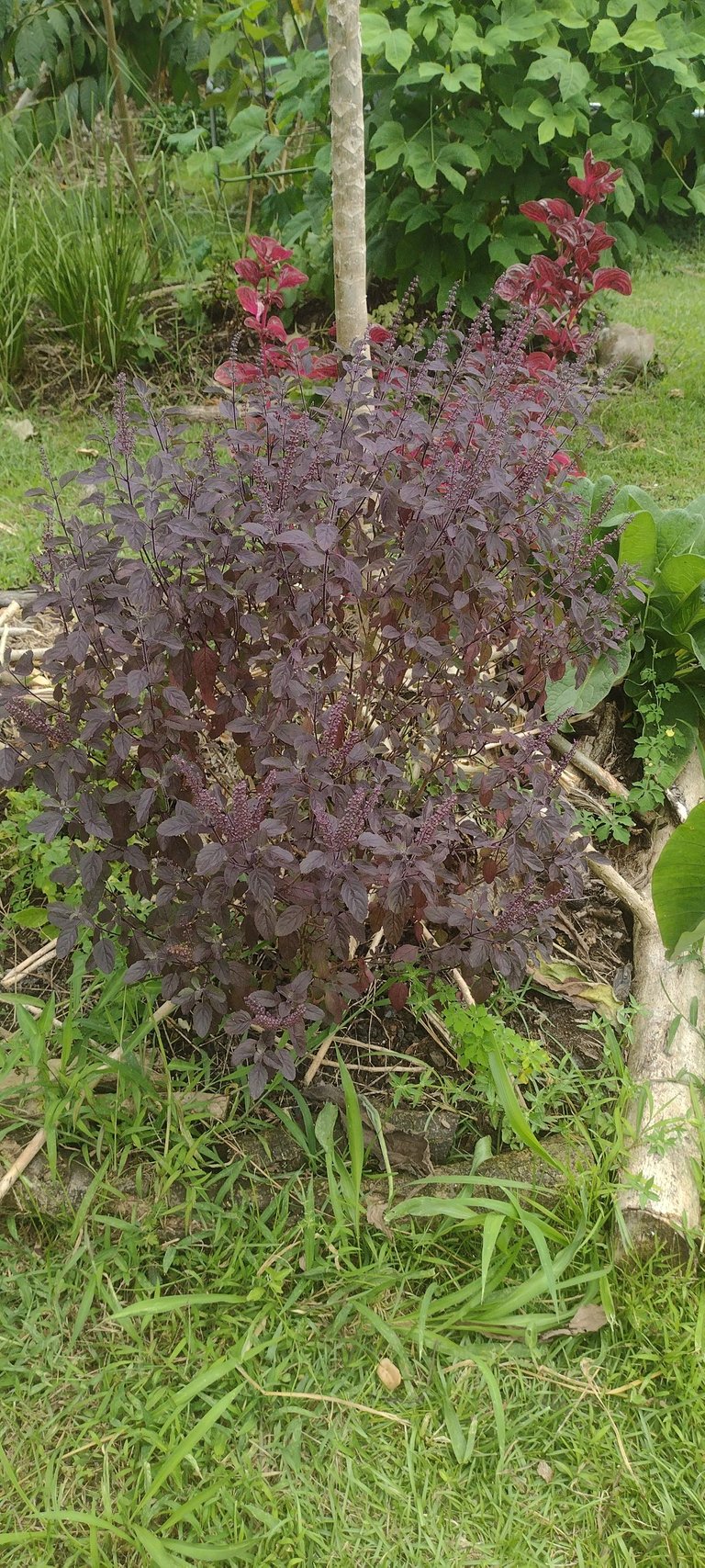
Here's a closer view of the same plant.

To give you an an idea of what I mean when I say that the above clone is "darker purple, with smaller, more serrated, non-waivy leaves", this is a photo of another plant with the more usual coloring and leaf size and shape for Krishna tulsi.
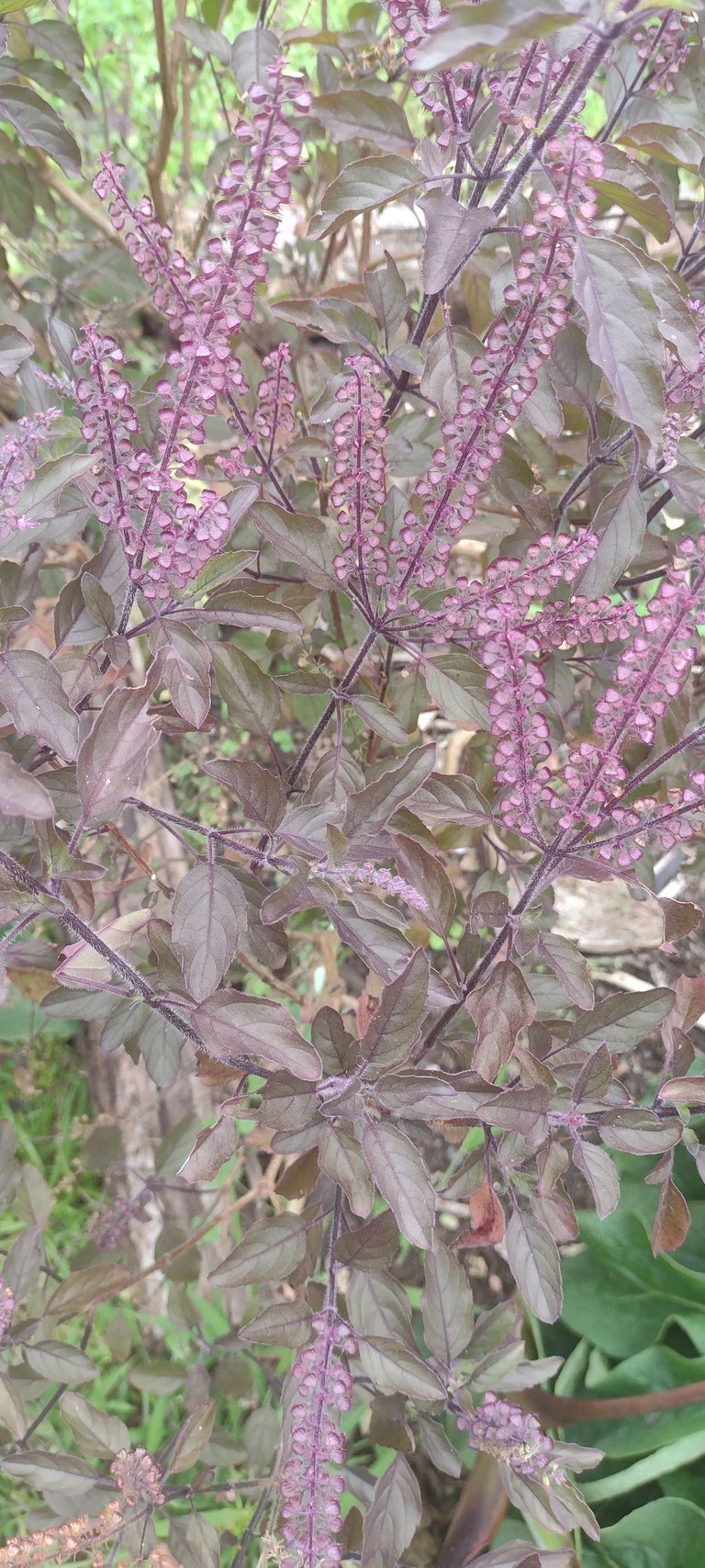
Here are the six cuttings that I took, just before pruning off the flowers and potting them up. I love how, even though the leaves and stems are such a deep purple, that the undersides of the leaves are still a beautiful light green! Such a gorgeous contrast!
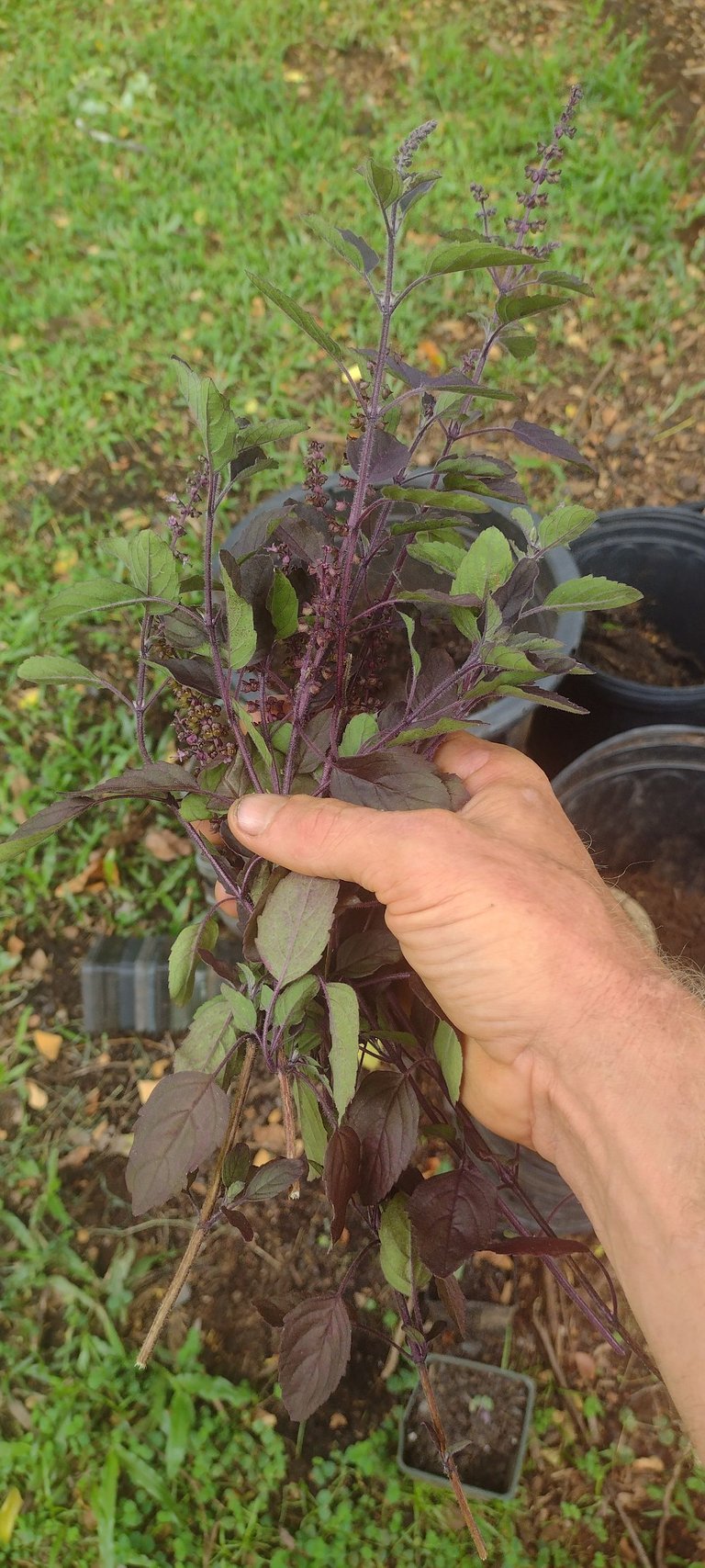
Here are the six cuttings, pruned, potted up, placed in a partially shady location, and watered. If all goes well, they should be fully rooted and ready to up-pot in two weeks or so.
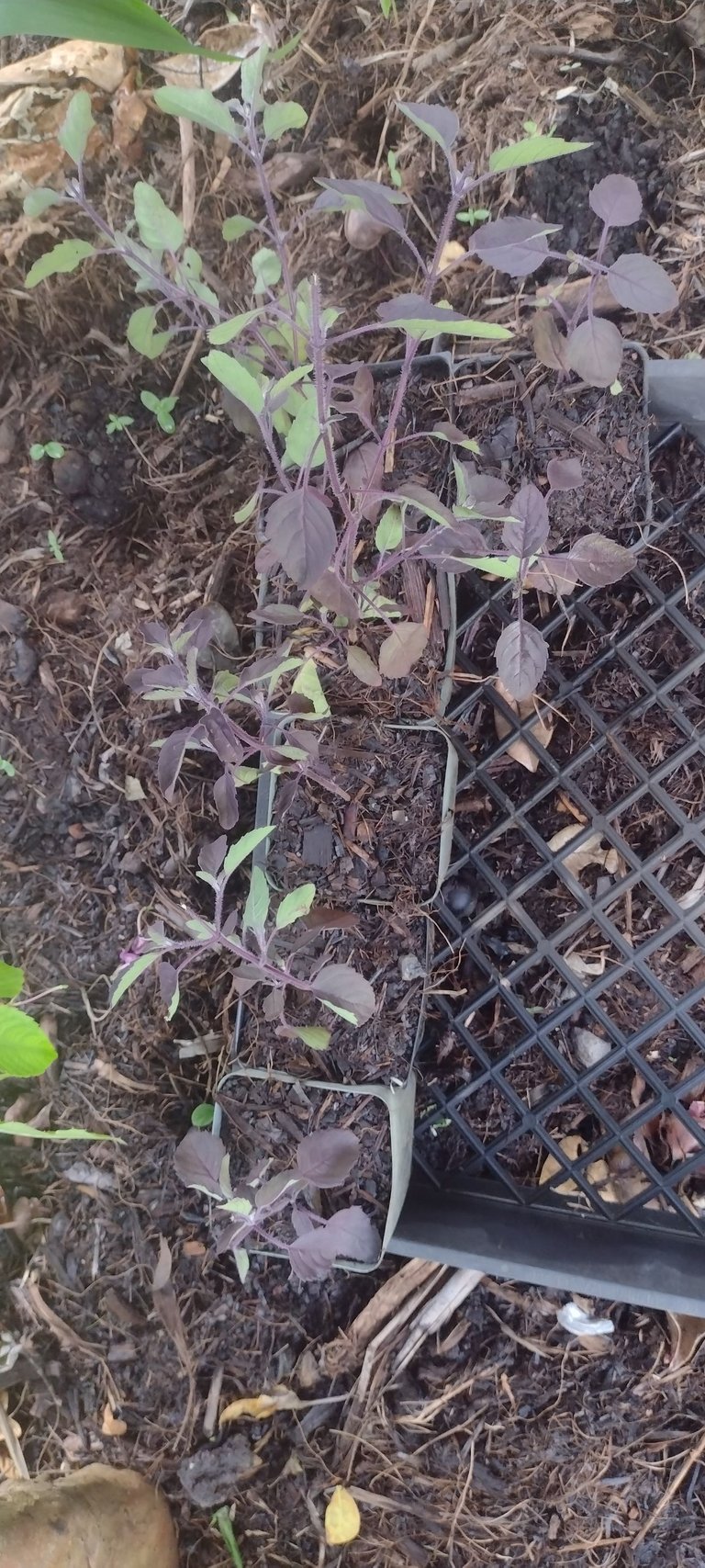
To give you even more clarity around some of the variation that exists in different clones of Krishna tulsi, here is the first of two more clones that I propagate and plant all over the place. This one is the very first clone that I came to know, and with which I began working and growing, several years ago. It has a more sprawling habit, with smaller leaves, of a more bronze hue.
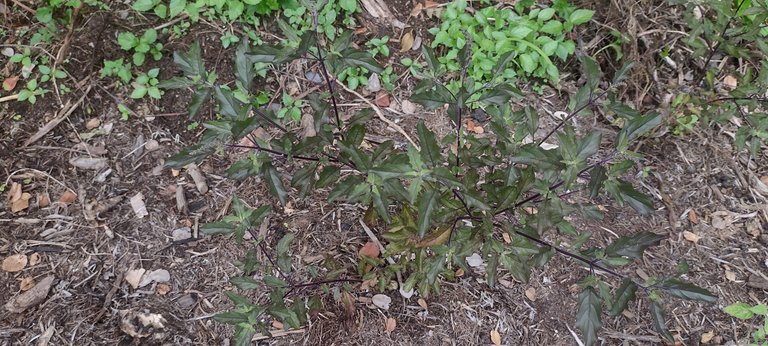
And this plant, which is the second clone that I noticed had different characteristics from the usual phenotypic expressions of Krishna tulsi. It is much more vigorous, with a more upright habit, and larger leaves. I propagate and plant this one all over as well.

And speaking of variation within a species, this is what I believe to be the true Rama tulsi, which is the same species as Krishna tulsi - Oncimum tenuiflorum. It's basically an all-green, non-purple variety of Krishna tulsi. This is one of the two first vigorous seedlings that I got in the ground. I'm really excited to have this new variation! I can't until I have enough to start harvesting for my medicinal tea blends!
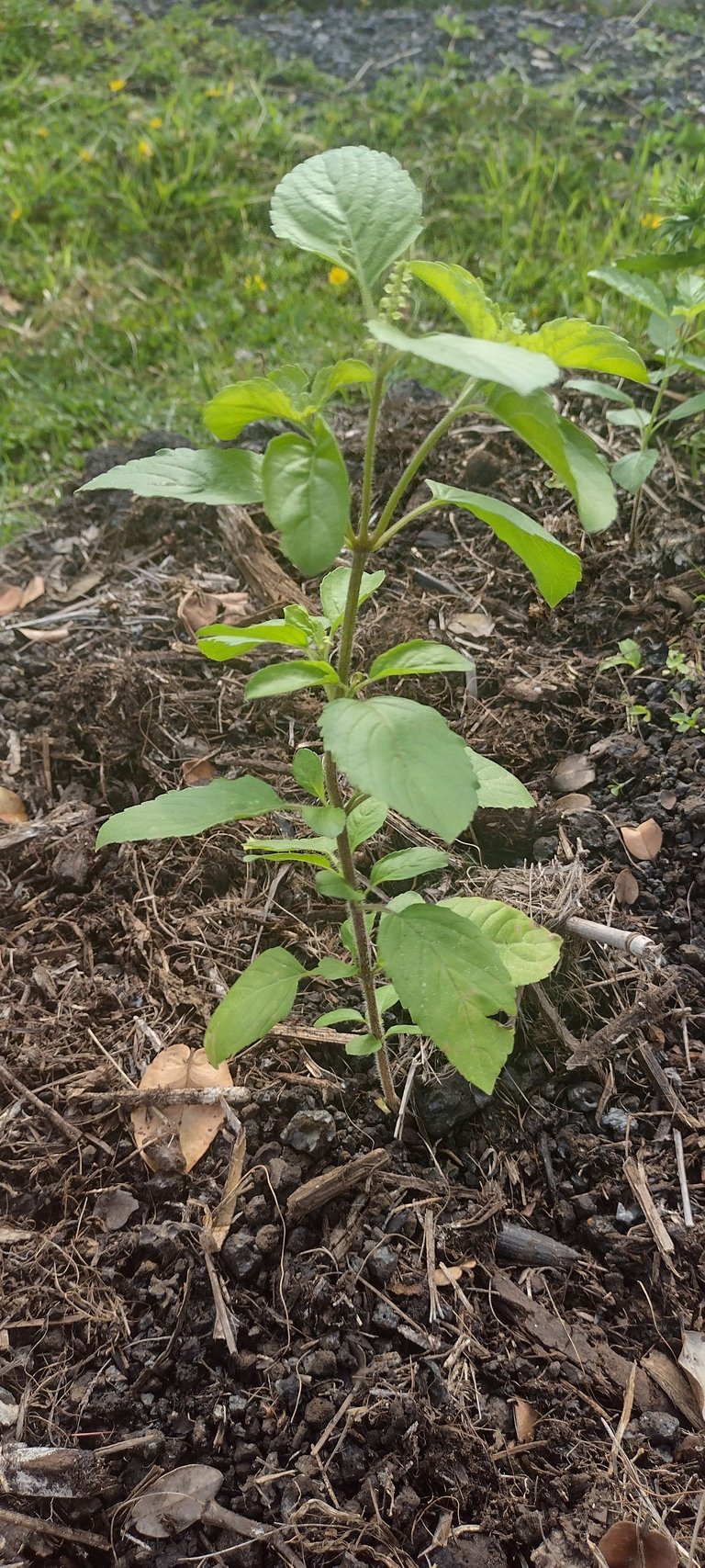
After the first two that I planted in this bed a week ago did so well, I decided to plant several more larger seedlings. You can also see two plant of Cuban cilantro/culantro - Eryngium foetidum (another species that I plant all over the place) in the bed, which are doing so well that they are beginning to self-seed, so this will likely be a full bed of Rama tulsi and Cuban cilantro very soon. That make me quite happy, as I'll use both in my medicinal teas.
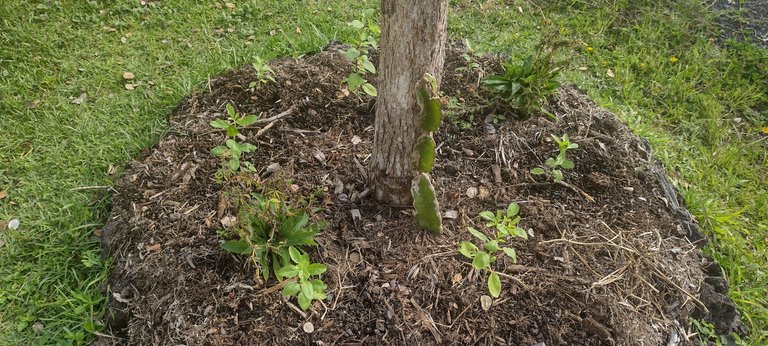
That's all for this Mini July Seaview Garden Journal Update! I hope y'all enjoyed playing with tulsi as much as I did! Until my next update!
Thank you all so much for allowing me to share more of the beauty and magic from my life and my world with you, and for your continuous appreciation and support! I am deeply grateful! 🙏 💚

Image created by @doze.


 -
- 